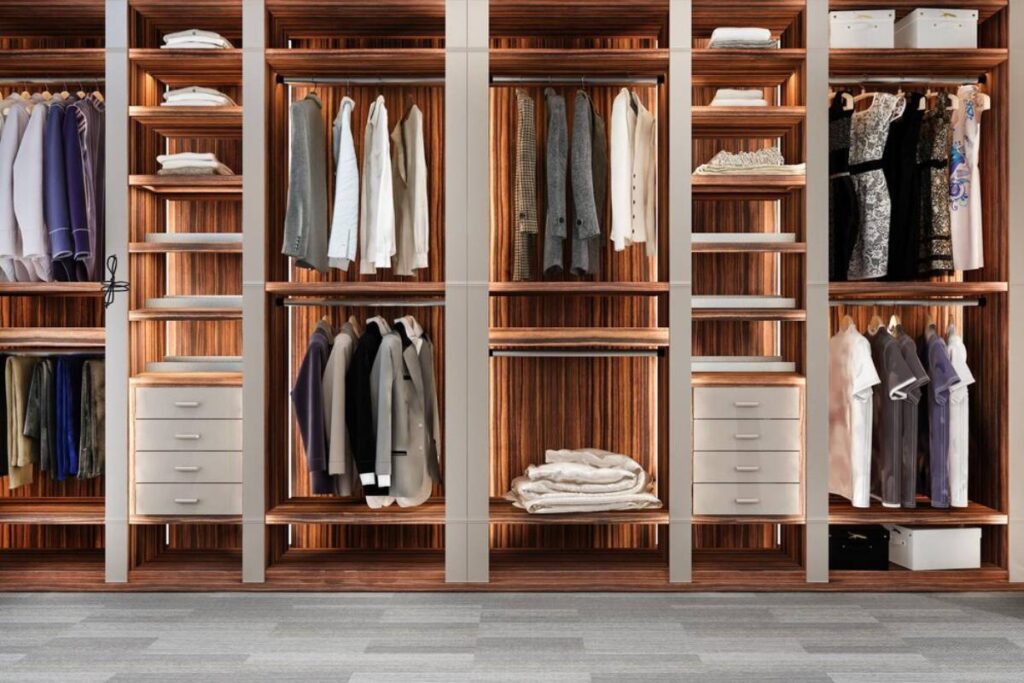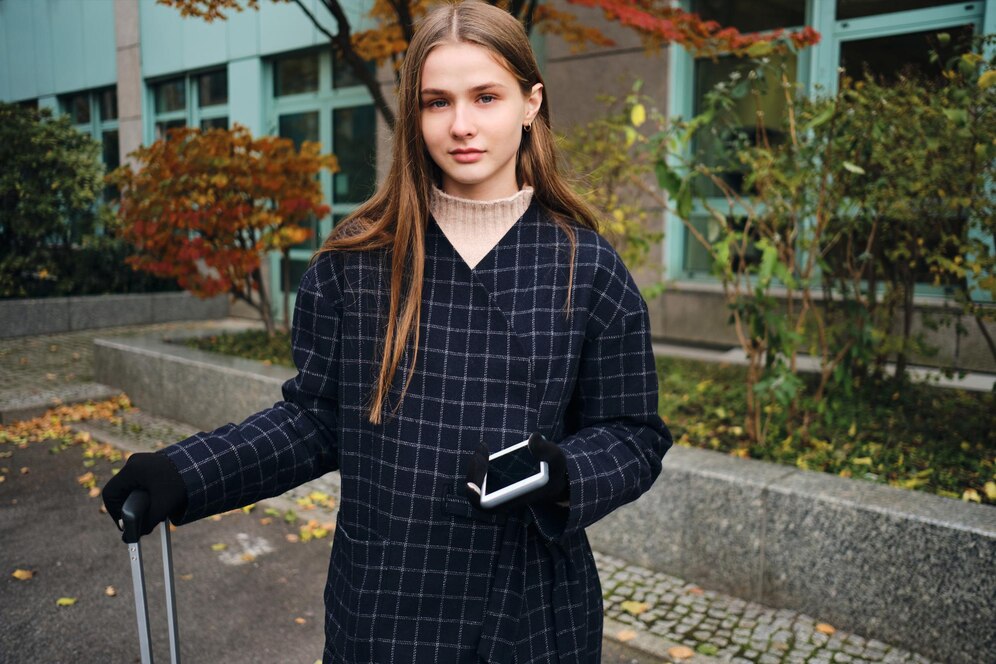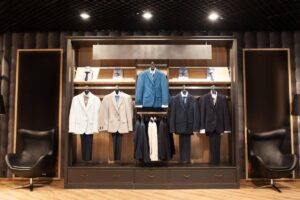The Fashion & Beauty Blog

Best Fabrics for Work Capsule Wardrobes: Comfort, Polish & Sustainability in Every Stitch
Your Wardrobe’s Foundation Matters More Than You Think
Ever pulled out your favourite blouse in the morning only to find it a crumpled mess — again? Or maybe you’ve sat through a long meeting in a stiff blazer, secretly counting the minutes until you could change?
We’ve all been there. And the culprit is often the fabric.
When building a capsule wardrobe for work, the focus is usually on style and colour, but fabric is the unsung hero. Choosing the right materials is the difference between a wardrobe that works for you and one that constantly needs steaming, dry cleaning, or adjusting.
In this post, we’ll explore the best fabrics for professional clothing, including wrinkle-free workwear and sustainable office fashion options. Whether you’re commuting on the Tube, sitting in back-to-back calls, or heading straight from the office to dinner, your clothes should feel good, look sharp, and keep up with your pace.
Let’s dive into the fabrics that’ll help you stay polished without the extra effort.
Why Fabric Choice Is Crucial for a Workwear Capsule Wardrobe
Before we get into the specifics, let’s break down why fabric matters so much in the context of a capsule wardrobe.
It Impacts:
- Durability – You want items that last through frequent wear.
- Comfort – All-day wear demands breathability and ease.
- Maintenance – Who has time for daily ironing or dry cleaning?
- Style Longevity – Fabrics that retain shape and colour keep your outfits looking fresh.
- Sustainability – Your fashion choices can support the planet, too.
When you only have 25–30 core pieces in rotation, every item needs to deliver. Fabric isn’t just about feel — it’s about function and philosophy.
Top Fabrics for Wrinkle-Free, Comfortable Workwear
1. Merino Wool: The Unexpected Power Player

Why it works:
- Naturally wrinkle-resistant
- Breathable and thermoregulating (yes, even in summer!)
- Odour-resistant — fewer washes needed
Perfect for: Tailored trousers, fine-knit jumpers, blazers
Real-world win: Nina, a finance exec in Birmingham, shared
“My merino cardigan is my secret weapon — it looks smart, feels like pyjamas, and hasn’t needed ironing in months.”
Tip: Look for lighter weights for layering or warmer months.
2. Ponte Knit: Structure Meets Stretch
Why it works:
- Holds its shape brilliantly
- Feels like a thicker jersey, but looks polished
- Comfortable enough to wear all day (and night)
Perfect for: Pencil skirts, dresses, structured trousers
Why professionals love it: It’s the comfort of leggings in the silhouette of a suit. No compromises.
3. Tencel (Lyocell): Eco-Friendly Elegance
Why it works:
- Sustainable — made from wood pulp using closed-loop processes
- Super soft and drapes beautifully
- Naturally resistant to wrinkles
Perfect for: Blouses, shirts, wide-leg trousers
Green bonus: Tencel production uses 80% less water than cotton (according to Lenzing, its primary producer). That’s a big win for sustainable office fashion.
4. Polyester Blends: Low-Maintenance Performance
Why it works:
- Wrinkle-resistant and quick drying
- Often blended with natural fibres to add durability and stretch
- Affordable and readily available
Perfect for: Blazers, skirts, lined dresses
A word of caution: Opt for high-quality poly blends or recycled polyester to avoid that “shiny” look or environmental drawbacks.
5. Modal: Smooth, Soft, and Stylish
Why it works:
- Luxuriously soft, often compared to silk
- Breathable and drapes well
- Resists shrinkage and colour fading
Perfect for: Layering tops, office camisoles, shirts
Bonus: Modal is often blended with cotton or elastane for extra resilience and stretch, which is great for wardrobe longevity.
Fabrics to Be Cautious With (And How to Use Them Wisely)
Not every fabric is ideal for daily office wear, especially if you want low-maintenance capsule pieces. Here’s a quick breakdown of what to watch out for.
Cotton
- Pros: Breathable, easy to wash
- Cons: Wrinkles easily unless blended
- Tip: Opt for cotton-poplin blends or pre-treated options
Linen
- Pros: Ultra-breathable and chic
- Cons: Wrinkles like nobody’s business
- Tip: Use linen blends (with viscose or cotton) for a more polished finish
Silk
- Pros: Elegant and lightweight
- Cons: High-maintenance, delicate, and expensive
- Tip: Save for special items or opt for washable silks if available
Building a Fabric-Smart Work Capsule: Key Tips
1. Prioritise Blends Over Pure Fabrics
Most high-performing workwear items are made from fabric blends, not 100% of one fibre. Why? Because blends often combine the best traits — stretch, durability, and wrinkle resistance — without the drawbacks.
Example: A blazer that’s 60% polyester, 35% viscose, 5% elastane might sound technical, but that combo means:
- Easy care
- Slight stretch
- Long-lasting colour and shape
2. Feel Before You Buy
Even the same fabric type can vary wildly depending on the brand or blend. When shopping in person, do the “scrunch test” — grab a handful of fabric, squeeze for five seconds, and release. Does it wrinkle instantly? That tells you a lot.
3. Check Care Labels Early
Let’s be honest — if it says “Dry Clean Only,” are you really going to wear it regularly? Choose fabrics you can machine-wash or spot-clean easily, especially for high-rotation items.
Sustainable Office Fashion: Fabrics That Care for the Planet
If you’re aiming to align your style with your values, consider these eco-conscious fabric choices:
Organic Cotton
- Grown without harmful pesticides
- Lower water use than conventional cotton
- Best for shirts, tops, and casual Fridays
Recycled Polyester
- Made from plastic bottles
- Uses less energy to produce
- Often found in blazers, suits, and activewear-inspired workwear
Bamboo Viscose (with care)
- Soft, naturally antibacterial
- Sustainable if processed responsibly
- Great for breathable base layers
Always check certifications like GOTS, OEKO-TEX, or TENCEL™ branding to ensure sustainable claims are verified.
Real-Life Work Capsule Wins: What Women Love Wearing
We asked women across industries which fabrics they rely on in their day-to-day capsule wardrobes. Here’s what they said:
- “My ponte dress is my go-to. It looks like I tried harder than I did.” – Ruth, legal assistant, London
- “Tencel shirts are a godsend. I look sharp, but they feel like pyjamas.” – Zoe, PR consultant, Edinburgh
- “Merino knitwear is all I wear in winter — no itch, no fuss, and it layers perfectly.” – Alex, architect, Manchester
It’s clear: When fabric works, everything else falls into place.
Conclusion: Fabric Smarts and Style That Works Hard for You

Your work capsule wardrobe is an investment — and like any investment, what you put in determines what you get out. Prioritising professional clothing fabrics that are wrinkle-resistant, comfortable, and sustainable means fewer headaches, more confidence, and effortless daily dressing.
Instead of wrestling with creases or panicking over what to wear, your wardrobe becomes a toolkit — full of pieces you love, trust, and wear on repeat.
So next time you’re shopping for workwear, don’t just look at the cut or colour — check the label. Your future mornings will thank you.









